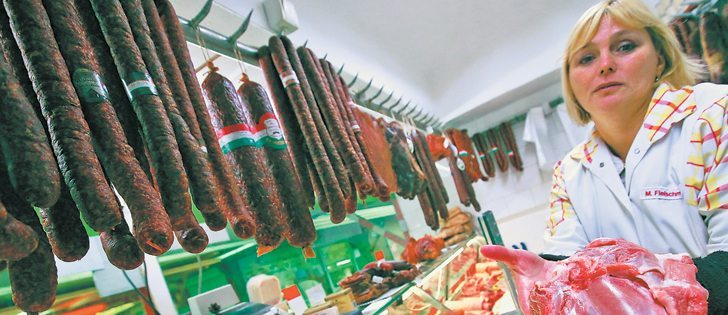Europe is large beef, pork market | Canada will be trying to break through trade barriers that have kept its meat out of EU
They like raising pigs and cattle.
They also like eating pork and beef.
The way those two factors play out will help determine how much Canadian pork and beef is allowed into the European Union if a successful free trade deal is approved, says Canada’s chief agricultural trade negotiator.
“One of the most competitive producers in the world is Denmark,” Frederic Seppey told reporters after his speech at the Canada Grains Council’s annual meeting.
“But still it’s the largest consumer of pork in the world.”
Read Also

Tick research from the University of Manitoba focuses on insects and testing
Manitoba researchers are looking into the effects of tick and fly disease in cattle.
Seppey said Canada wants more access for its pork and beef in any free trade deal signed with the EU. Such a deal is close to being finalized, he added, but pork and beef access are sensitive issues for some EU countries.
There is Denmark and its hog industry, but the French are also keen to support its cattle producers and worry about imports of cheaper North American beef.
As well, the Irish government has warned against easy access for North American beef.
“They produce high quality beef but with a higher cost structure than we have in Canada,” said Seppey.
Canadian exports are restricted by a number of import controls and tariffs, including phytosanitary issues that Canada does not accept as being scientifically justified.
Seppey said laying out a clear set of rules for free access is key, but that’s where things get complicated.
For example, “rules of origin” will define if meat from an animal is Canadian or not, depending on how much of its life it spent in Canada. Canada is arguing that any animal slaughtered and processed in Canada should qualify as Canadian, while Europeans might want to insist on an animal having spent its entire life in Canada to qualify as Canadian.
Seppey said it’s difficult to get a clear sense of what European countries are saying because Canadian negotiators deal with the European Commission, which represents the more than two dozen EU members.
“It is always challenging to see what is going on behind,” said Seppey.
He said negotiating better access is important because Europe is a gigantic market but imports only a small amount of pork.
Canada used to export more pork to Romania than to the entire EU, until Romania joined the EU. Now Canadian exports to Romania have collapsed.
However, even though Canadian meat exporters face resistance from European producers when trying to sell into Europe, they can be allies when trying to get into other markets, Seppey said.
For example, Denmark sometimes makes common cause with Canada.
“They are a key competitor, and we can even work together with the Danes when it comes time to get across the border into Japan be-cause we have common interests,” he said.


















